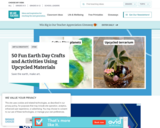
30 crafts you can do at home or school with recycled materials. Get Creative!
- Subject:
- Arts Education
- Visual Arts
- Material Type:
- Activity/Lab
- Author:
- Jessica Mcfadden
- Posted Jessica Mcfadden
- Date Added:
- 06/01/2020
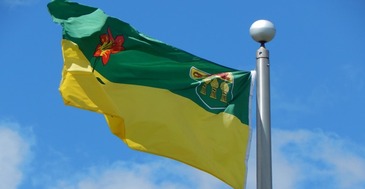
In Grade 4 Visual Arts, students are asked to create artworks that express their own ideas and draw on sources of inspiration from Saskatchewan.
Students are encouraged to create artworks using a variety of concepts (like organic shapes), forms (like kinetic sculpture and mural), and media (like wood, wire, and found objects).
Explore this collection to find resources and activities suitable for Grade 4 Visual Arts.

30 crafts you can do at home or school with recycled materials. Get Creative!

Students will observe dance movements depicted in a drawing and a painting. Partners will use simple lines to draw their partner's movements and paint dance costumes on the figures using various brushstrokes. Students will write a persuasive speech to the school superintendent explaining why they believe dance should be a regular part of the curriculum. They will then model dance movements for classmates in teams of four and recite their persuasive speech to the class.
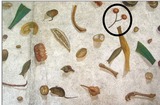
This resource outlines the Ancient Greek art form, Trompe L'Oeil. Several resources are provided to learn more about this concept. Links for realistic drawing tutorials from Art for Kids Hub are also included.

This resources includes a couple of Ancient Greek Vase Project ideas. Vases and jugs were a very popular Ancient Greek art form.

Children’s drawings have a wonderful inventiveness, energy, and variety.
Bring children's drawings to life by animating characters to move around!
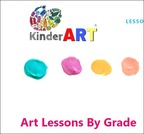
Here you can browse through art lesson plans by age or grade, from Preschool through High School.
The site includes a "What you can expect" of students artists at each age level.
At KinderArt "Our mission is to create and provide art lesson plans that parents and teachers can use in their home and school classrooms. We aim to offer ideas that make use of readily available materials that won't break the bank."
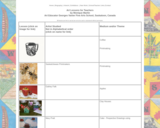
Art Lessons for Teachers
by Monique Martin
Art Educator Georges Vanier Fine Arts School, Saskatoon, Canada
Includes: printmaking, sculpture, perspective drawing, colours, mixed media, chair design, clay, architecture, cultural art, drawing, painting, quilting, and much more!

This collection of art videos will support teachers and students in their quest to learn more about art.
Videos include: Matisse, Chagall, Michelangelo, pointillism, Britto, Chinese Dragon, Dali, Pollock, Tin Art, Kindness Rocks, Landscapes, Fashion Design, Collaborative Portraits, Zentangle, Howard, Dhurrie Rug, Magritte.
There are great ideas for lessons here, information about famous artists and great individual or collaborative projects.

Paint a vivid picture in your reader's mind with good descriptive writing! Artwork provides the perfect starting point for practicing descriptive writing that conveys color, shape, line, and mood.

Teachers can search their database for lesson ideas and art history assignments.

A collection of hands on arts and crafts activities for preschool to grade 5.

This site offers visual and performing art lessons from kindergarten through high school. Many of the lessons can be integrated into core subjects such as Math, Language Arts, Science, or Social Studies. Opportunities for creativity are some of the building blocks of child development and concept acquisition. Lessons are categorized by grade for easy retrieval.

Students use washable paints, markers, and construction paper to illustrate a month from the traditional Cree Calendar
Students will be able to:
illustrate a month from the traditional Cree calendar;
demonstrate an understanding of the changes, cycles and patterns that occur in nature through words and images;
draw/paint geometric and organic shapes;
create the illusion of depth in space using size;
connect personal life experiences to their artworks.
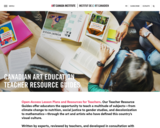
Canadian art is a door to learning about a wide range of subjects.
The Art Canada Institute teacher resource guides presented here offer students the opportunity to study a multitude of subjects—from environmental awareness to activism, social justice to gender studies, politics to computer science (to name a few)—through the art and artists who have defined this country’s visual culture.
Following our provinces’ education curricula, the teacher resource guides provide multidisciplinary learning activities that reveal how Canadian art powerfully reflects our world so we can better understand it.
Activities for K-12!

This website outlines the steps to create a Chinese Flower Vase art project for kids.

« La chaîne éducative Cinéma autochtone vise à engager les apprenants dans des discussions sur l’histoire coloniale du Canada et son impact sur les communautés autochtones. Nous vous invitons à découvrir notre collection de films réalisés par des cinéastes autochtones et par des gens qui sont leurs alliés. »
Accédez à de ressources pédagogiques connexes en utilisant votre adresse courriel scolaire pour vous connecter à la plateforme ONF « CAMPUS » : https://www.onf.ca/campus-canada/#campus-subscription-section
**Visionnez toujours les films avant de les montrer aux élèves - cette collection n'est pas nécessairement destinée aux enfants.**

Using different writing/drawing materials (e.g., markers, color pencils, pastels, etc.), students learn how to communicate different moods and/or feelings to support their written ideas and how authors do the same through their work.

The importance of family is prominent throughout the works, The vibrant colours represents the joy of life, it is meant to inspire hope, success, and happiness. These paintings are a tribute to my late mother who was my guide throughout my life, my late Grandmother for her strength in cultural beliefs and traditions, and my children for the inspiration they give me, Meegwetch.
- Kevin Peeace

This form of painting became popular during the Cultural Revolution in China (1966-1976). Images depicting people's every day lives became a natural focus under the regime of Chairman Mao. Artists in places like Hu County in Shaanxi Province (near Xi'an), where these painting were made, were discovered and became popular. This particular series of Peasant Paintings, by a mature, female artist named Dong, were done in a studio production method.The peasant paintings depict festivals and daily routines: preparing food, doing laundry, traditional parades (lanterns, dragons), animals and fish. Some tell stories with symbolism. This curriculum resource will provide potential lesson topics and areas of discovery and a set of images for teachers of art, Chinese culture & history at elementary, middle and high school levels. The paintings may serve as supplementary visuals for K-8 teachers of science, and geography.

Students will focus on how one artist tells the story of Joseph using continuous narrative. By observing and discussing visual details such as color and movement found in the painting, students write about what they think is happening. Students are encouraged to use the actions they observed in the painting to create and write a new story with a new character, and then illustrate them in their own continuous narrative.